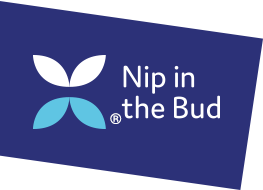Watch our Films
PTSD in Children
Exposure to traumatic events is very common in young people. After a trauma a child may feel distressed, tearful or in shock. In most cases they will recover well with family support but if these feelings persist, they may have developed Post Traumatic Stress Disorder (PTSD). This film explains how to identify and help a child showing the symptoms of PTSD.
Find out more about PTSD in Children, read and download our fact sheets, watch more videos or sign up for our mailing list and free interactive guide.
What is post-traumatic stress disorder (PTSD)?
Many young people will go through trauma – where they felt very scared for themselves or for someone else. Sometimes, this can lead to mental health difficulties such as post-traumatic stress disorder (or PTSD). In this video you will learn about PTSD – what it might look like or feel like, the main symptoms, and where you might go if you need help or support.
What is trauma-focused CBT?
Trauma-focused cognitive behaviour therapies are our best-evidenced way to help young people to overcome post-traumatic stress disorder (PTSD). Learn about what trauma-focused CBT is and how it can help someone to face and overcome their traumas.
Coping with scary and distressing memories
When young people go through traumas one of the hardest things to deal with can be their memories of what happened. This video gives brief advice on what you can do to help cope with memories that are very scary or distressing, and where you can turn to for support.
Absolutely not: and other thoughts you might have about mental health support
After you’ve been through very frightening experiences, asking for help and getting mental health support can feel scary or overwhelming. Sometimes it might feel like there is no one that could possibly help. This video talks about getting mental health support after trauma, and why, even if it feels hard, it can be helpful.
PTSD in children: Tips For Teachers
This 4 minute film gives Tips for Teachers who either have a child or children in their class who are experiencing symptoms of Post-Traumatic Stress Disorder (PTSD) or have a known diagnosis of PTSD.
Read and download our fact sheets, watch more videos or sign up for our mailing list and free interactive guide.
PTSD and Me : Real Life Child Mental Health Experiences
Please note – some images and content may be upsetting or disturbing. This film is not intended to be watched by children.
This short film features real life accounts of Post-Traumatic Stress Disorder (PTSD) experienced by young people. Through their words we see the importance of early intervention by parents and teachers.
Exposure to traumatic events is very common in young people. After a trauma a child may feel distressed, tearful or in shock. In most cases they will recover well with family support but if these feelings persist, they may have developed Post-Traumatic Stress Disorder (PTSD).
Nip in the bud strongly believes that early intervention and support for children ensures far better outcomes.
Find out more about PTSD in Children, read and download our fact sheets, watch more videos or sign up for our mailing list and free interactive guide.
How to Recognise Symptoms of PTSD
Find out more about PTSD in Children, read and download our fact sheets, watch more videos or sign up for our mailing list and free interactive guide.
Further information:
PTSD or post-traumatic stress disorder can be triggered in children when they experience a particularly horrifying or scarring event. The cause can be as varied as a car crash or sexual assault. A child can develop PTSD if they are involved in this event, witnessed it, or even heard about it second-hand.
Children with PTSD will often have trouble concentrating and may even fall asleep during school time due to the lack of sleep they’re having at home, making learning much harder. A sudden plummet in grades is also a red flag – in such cases, it is important to check up on the student rather than reprimand them, which can cause further harm.
PTSD also causes many children to become highly irritable and angry due to the intense emotions they’re experiencing, often making them see other people as a threat. In this case, it is important to set clear behavioural expectations to let the child know that they should not act aggressively towards other children while being careful not to shame and harm them further.
As a teacher, it is important to be mindful of the fact that some groups of children are more susceptible to PTSD, making them more vulnerable – such as asylum seekers and refugees. Some of these children have endured war and death at a young age and may have even been separated from their parents. Make sure to take special measures to ensure these children are looked after.
If severe PTSD symptoms such as lack of sleep, irritability, frequent flashbacks and triggers, and intense anxiety continue, it is wise to contact a Special Educational Needs Co-Ordinator (SENCO), a social worker or mental health professional. If it is very clear that the trauma is not caused by the parents, inform them and talk through a plan of action to help your student accordingly.

